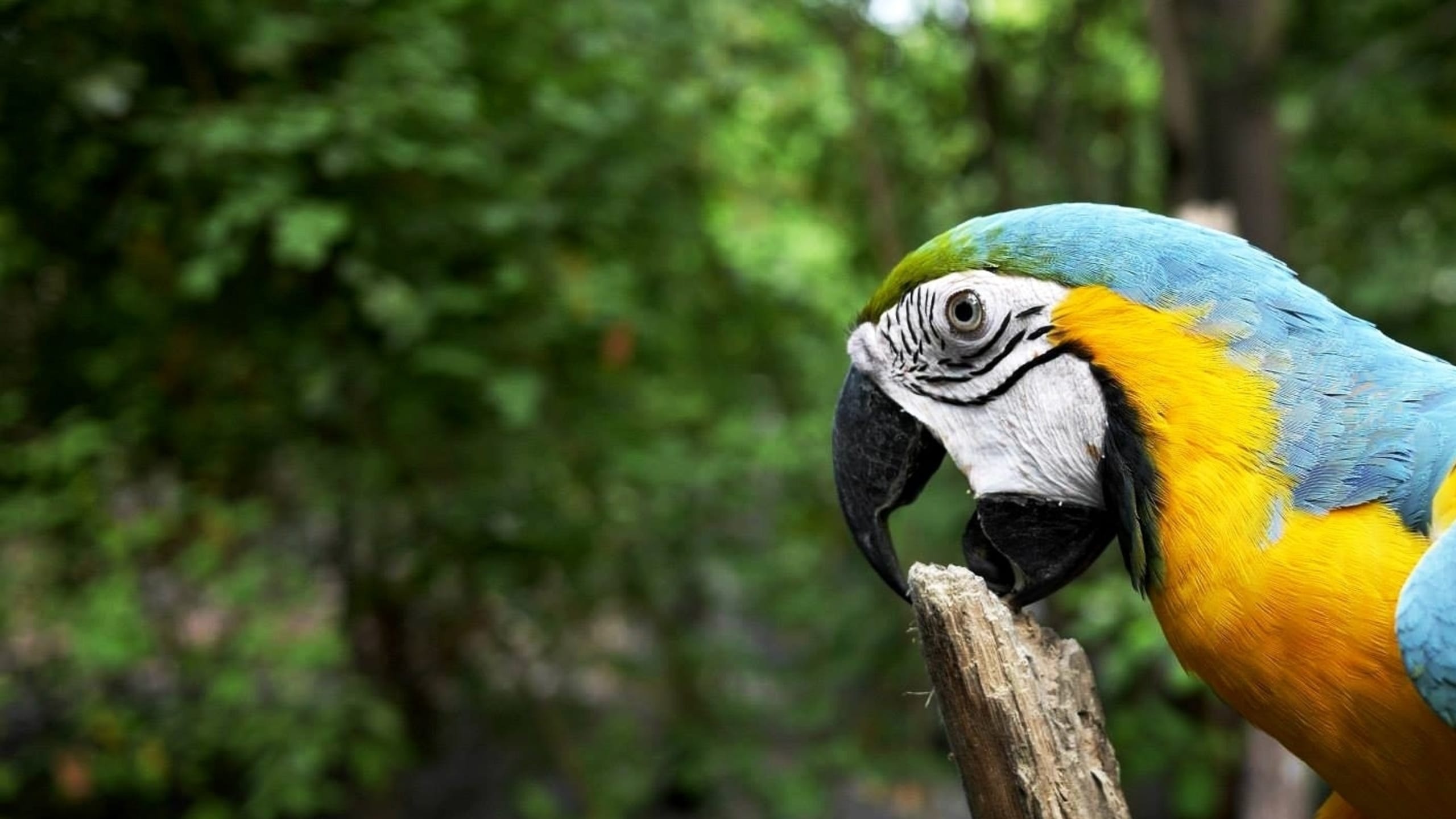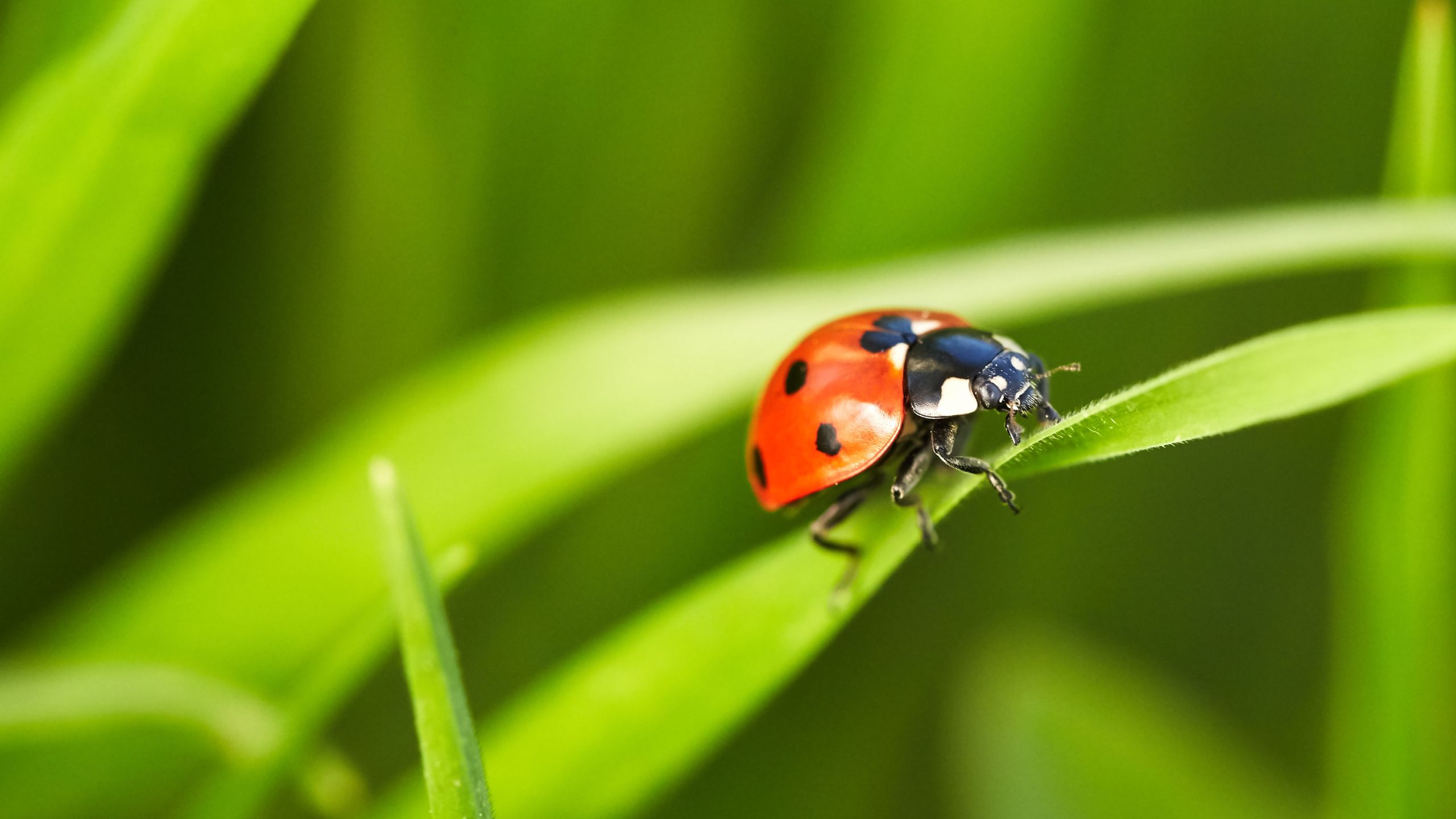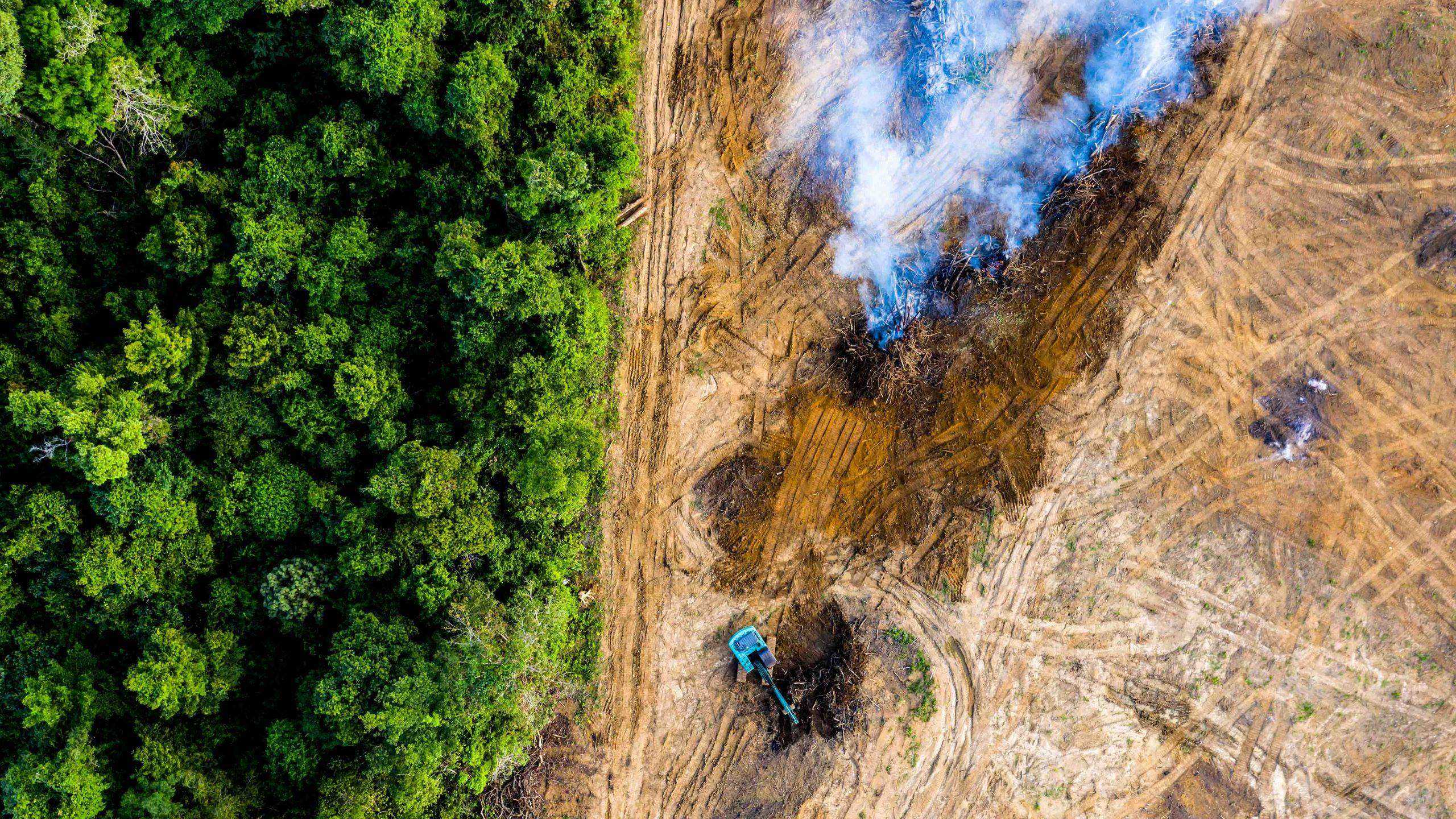Welcome to Serra do Açor
Serra do Açor, a mountain chain in Portugal, lies between two other mountain chains, Serra da Lousã and Serra da Estrela, and covers the municipalities of Arganil and Pampilhosa da Serra, in the district of Coimbra. With over one million hectares, Serra do Açor is a mountain area rich in schist, crossed by picturesque streams and waterfalls like Ribeira da Mata da Margaraça and Barroca de Degraínhos, an area where natural erosion has led to several waterfalls such as Fraga da Pena.
The highest point of Serra do Açor, at 1,418 metres of altitude, is Pico da Cebola. The view is impressive there, with beautiful native flora such as the martagon lily or the English oak enriching the landscape. Fauna includes wild boars, amphibians, reptiles, mammals, birds and about 240 species of butterflies. And, of course, the Northern Goshawk, whose Portuguese name is Açor, and after which the mountain gets is name.
Serra do Açor is one of the largest forested areas in Portugal, with indescribable beauty and enormous environmental importance. It was marked as Protected Landscape in 1982 to protect its natural, cultural, scientific and recreational values.
Importance of Serra do Açor
From the schist buildings, typical of the central region of the country due to the abundance of this material, to the endemic species and the vast forest cover, Serra do Açor is rich in biological, historical and cultural heritage.
-
Biodiversity
In addition to the Açor, a bird of prey with a particular fondness for watercourses and large trees, Serra do Açor is home to a wide variety of trees in Portugal, a haven and habitat of many fascinating species, from birds to invertebrates, reptiles and mammals, many of which are endemic to the region. Its variety of habitats, which include forests, pastures, rivers and valleys, offers the ideal conditions for the survival of various species, contributing to the preservation of local and regional biodiversity.
-
Local communities
The local communities of Serra do Açor subsist on what nature provides, namely farming, grazing, beekeeping and handicrafts. The mountains there are rich in essential resources such as water, wood and pastures for livestock. Tourism is also gaining ground, with its landscapes, villages and traditions contrasting with the frenetic pace of the cities.
-
Environment
Preserving Serra do Açor and all its biodiversity means contributing to regulating the local climate, protecting against natural disasters such as floods and landslides, and conserving soil and water. In addition, the mountain plays an important role in maintaining water quality throughout the region, as many rivers and streams are born in this environment.

Wildfires are one of the main threats to Serra do Açor
It is especially in summer that we are confronted with deforestation of trees in Portugal caused by fires. In 2017, the idyllic setting of Serra do Açor was the scene of one of the biggest battles against fire: it lost around 80% of its woods and forests.
These phenomena are fuelled by climate change and global warming. But what are the causes of these fires that become untamable? According to the Portuguese Institute for Nature Conservation and Forests (ICNF), the main causes for wildfires in Portugal are:
- Negligent use of fire in agriculture, forestry and pastoralism that end up getting out of control, such as the burning of forest and agricultural remnants, rubbish, and bonfires.
- Intentional fire, that is, arson.
- Accidental fires, caused by transportation, telecommunications infrastructure, and use of machinery.
- Rekindling of extinguished fires.
- Natural causes, such as lightning strikes.
Of the total number of fires in the country, 20 to 30% have intentional causes, comprising 40 to 50% of total area burned, 50 to 60% are caused by negligence, comprising 30 to 40% of area burned, and only a very slim percentage represents natural causes such as lightning strikes, which is responsible for about one forest fire per year.
The Portugal Chama initiative, created by the Agency for Integrated Fire Management (AGIF) of Portugal and to which the Jerónimo Martins Group has been associated since 2019, aims to educate and alert the population to forest fires: how to prevent and how to act in case of fire.
Serra do Açor reforestation project: planting trees in Portugal
The black mantle that covered the forest in central Portugal in 2017 is gradually being renewed.
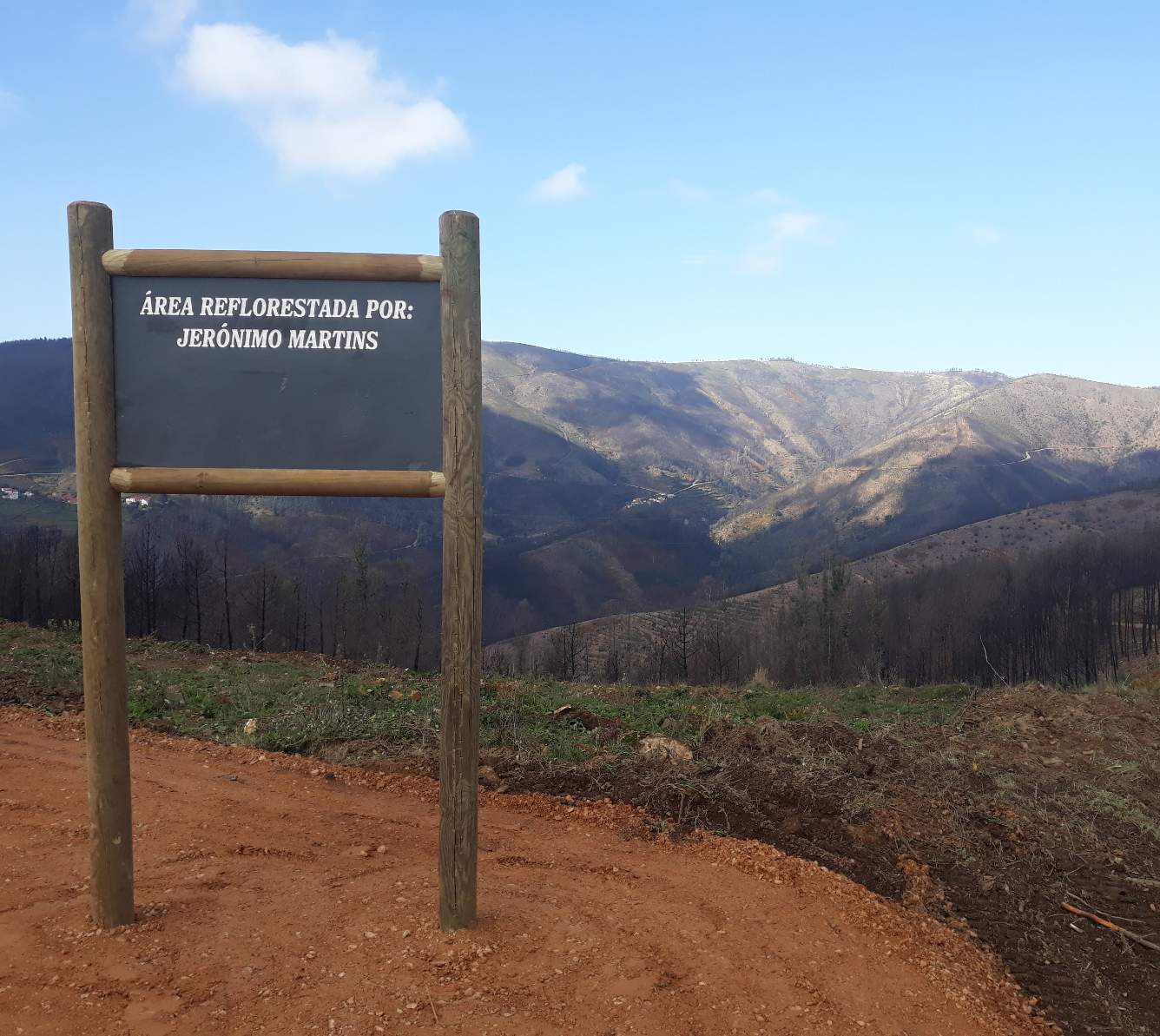
The project “Floresta Serra do Açor” (Serra do Açor Forrest) was launched in 2020 and is financed by the Jerónimo Martins Group, in collaboration with the Municipality of Arganil, the common landowners’ associations and the Agrarian School of Coimbra. An association was also created, recognised as a Forest Management entity (F. S. A. – Floresta da Serra do Açor – Associação) responsible for the management of the whole project.
The reforestation of Serra do Açor is a 40-year project, spanning an area of 2,500 hectares and with a 5 million euros investment. One of the first goals is to have planted more than 1.8 million trees of native species by 2026, including the cluster pine, various oak trees including the cork oak, the Spanish chestnut, and the strawberry tree.
In three years, from 2020 to 2023, this reforestation project in the Serra do Açor made it possible to plant 697,000 new trees.
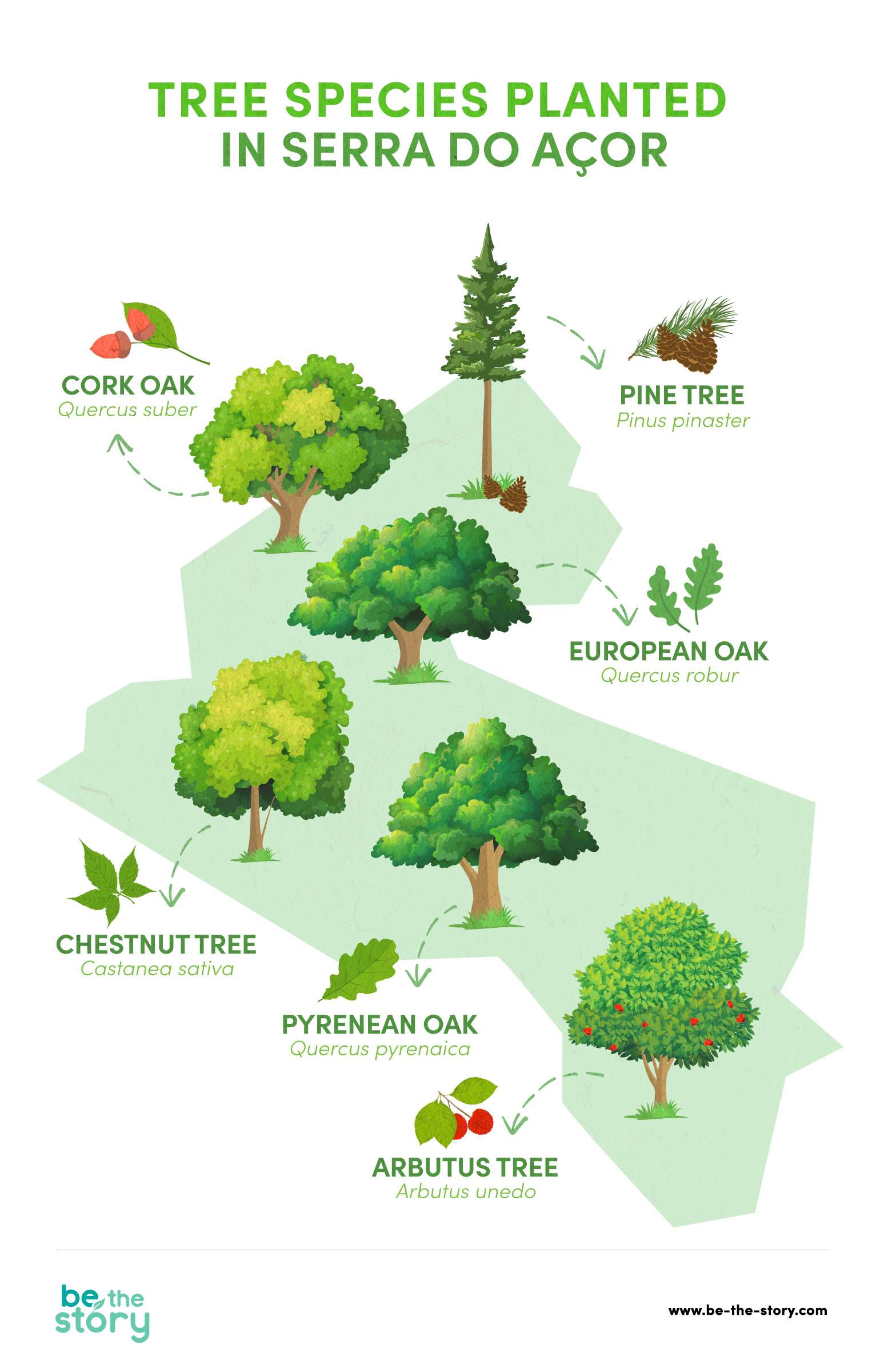
Tree species planted in Serra do Açor: cork oak (Quercus suber); pine tree (Pinus pinaster); European oak (Quercus robur); chestnut tree (Castanea sativa); Pyrenean oak (Quercus pyrenaica); arbutus tree (Arbutus unedo).
-
Cluster Pine (Pinus pinaster)
Also called Maritime Pine, it is native to Southwestern Europe and North Africa. It allows for resin extraction, helps with dune fixation and soil renewal, offers protection from the wind, and produces durable and resistant wood. It generates pine nuts, and its pine cones can be used as a renewable fuel.
-
Pyrenean Oak (Quercus pyrenaica)
Native to the Iberian Peninsula and North Africa, Pyrenean Oak provides quality wood. Their apples (or galls) are also a home remedy against wasp stings.
-
English oak (Quercus robur)
Also known as pedunculate oak, it is a Eurasian species, which was once dominant in the Portuguese forest. It produces acorns and resists moisture, making it one of the most valuable types of wood in Europe.
-
Cork oak (Quercus suber)
Endemic to Europe and Northern Africa, Cork oak is an important tree for the Portuguese economy since it produces the very versatile cork. Its acorns are used to feed cattle, namely Iberian pigs.
-
Spanish Chestnut (Castanea sativa)
Also referred to as Sweet Chestnut or just Chestnut, it originates in the Mediterranean and produces wood that can be used in construction, carpentry, and basketry. Its fruit – the delicious chestnut – is appreciated as food and used in animal feed.
-
Strawberry tree (Arbutus unedo)
Don’t be confused by the name because it has nothing to do with strawberries. This species is native to the Mediterranean Basin and Western Europe and is very resilient to temperature variations (up to -15 °C). Its fruit, the arbutus berry, bears some resemblance to the strawberry – hence the name – but is very different. The berry can be consumed fresh or used to produce liqueurs and brandies. Pollen from the flowers is used to produce honey (“Irish strawberry honey”, or in Portuguese “medronheiro” honey). Since it does not grow straight, its wood is used for firewood – and even for carving pipes.
The regeneration of forests does not depend solely on planting trees. As such, the reforestation project includes forest management measures such as continuous monitoring of species, replanting, pruning, and clearing. Other goals are wildfire prevention and promoting the local economy.
Fighting deforestation – in Serra do Açor and elsewhere in the world – is only possible with a sustainable long-term commitment. We all have a role to play in this journey, whether it’s avoiding risky behaviour, contributing to local tree planting, or simply enjoying what the forest has to offer responsibly.

